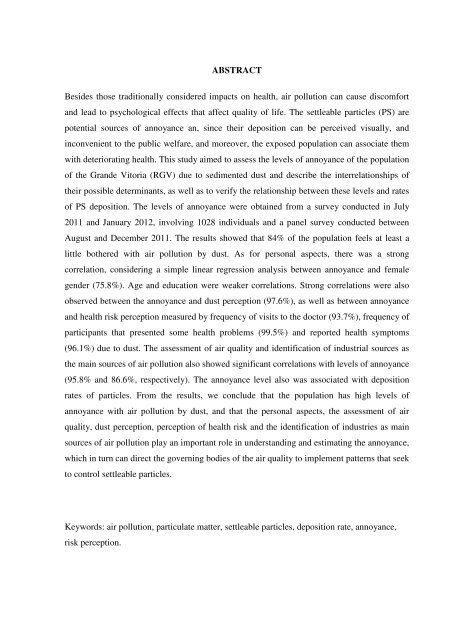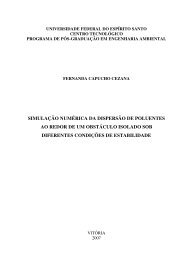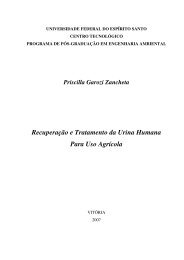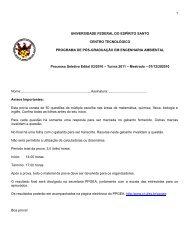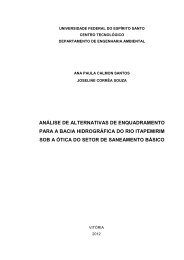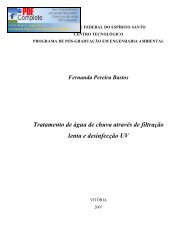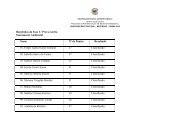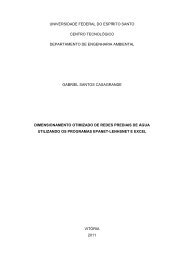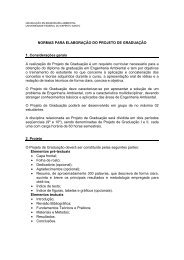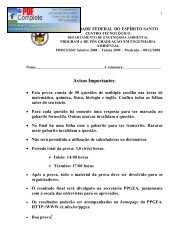avaliação do incômodo à população da região da grande vitória por ...
avaliação do incômodo à população da região da grande vitória por ...
avaliação do incômodo à população da região da grande vitória por ...
You also want an ePaper? Increase the reach of your titles
YUMPU automatically turns print PDFs into web optimized ePapers that Google loves.
ABSTRACTBesides those traditionally considered impacts on health, air pollution can cause discomfortand lead to psychological effects that affect quality of life. The settleable particles (PS) arepotential sources of annoyance an, since their deposition can be perceived visually, andinconvenient to the public welfare, and moreover, the exposed population can associate themwith deteriorating health. This study aimed to assess the levels of annoyance of the populationof the Grande Vitoria (RGV) due to sedimented dust and describe the interrelationships oftheir possible determinants, as well as to verify the relationship between these levels and ratesof PS deposition. The levels of annoyance were obtained from a survey conducted in July2011 and January 2012, involving 1028 individuals and a panel survey conducted betweenAugust and December 2011. The results showed that 84% of the population feels at least alittle bothered with air pollution by dust. As for personal aspects, there was a strongcorrelation, considering a simple linear regression analysis between annoyance and femalegender (75.8%). Age and education were weaker correlations. Strong correlations were alsoobserved between the annoyance and dust perception (97.6%), as well as between annoyanceand health risk perception measured by frequency of visits to the <strong>do</strong>ctor (93.7%), frequency ofparticipants that presented some health problems (99.5%) and re<strong>por</strong>ted health symptoms(96.1%) due to dust. The assessment of air quality and identification of industrial sources asthe main sources of air pollution also showed significant correlations with levels of annoyance(95.8% and 86.6%, respectively). The annoyance level also was associated with depositionrates of particles. From the results, we conclude that the population has high levels ofannoyance with air pollution by dust, and that the personal aspects, the assessment of airquality, dust perception, perception of health risk and the identification of industries as mainsources of air pollution play an im<strong>por</strong>tant role in understanding and estimating the annoyance,which in turn can direct the governing bodies of the air quality to implement patterns that seekto control settleable particles.Keywords: air pollution, particulate matter, settleable particles, deposition rate, annoyance,risk perception.


